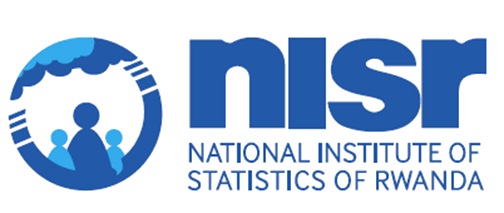In Rwanda youth was defined as the population aged 14 to 35 years before 2015. Since then, the new national youth policy defines youth as the population whose age is between 16 and 30 years.
The EICV7 results shows that 24.7% of youth population live in households below the poverty line while only 4.9% of youth population live in households below the extreme poverty line.
Overall, youth population (16-30 years) constitutes 27% of Rwanda’ s total population. The 16-20 years age group represented the largest proportion, accounting for 12% of the national population, followed by 21-25 years age group (8%) and finally 26-30 years age group (7% ) of the total population.
The largest age group in youth was 16-20 years, which comprises 10.2% of the total population. The age group 21-25 years comprises 8.4% of the total population and finally 26-30 years group represents 8.0% of the total population.
TABLE: Number of youth (16-30 years) by district, sex and residence
| Province/District | Total | ||
| Both sexes | Male | Female | |
| Rwanda | 3,595,670 | 1,767,063 | 1,828,607 |
| City of Kigali | 584,290 | 288,533 | 295,757 |
| Nyarugenge | 126,094 | 65,433 | 60,661 |
| Gasabo | 282,898 | 137,605 | 145,293 |
| Kicukiro | 175,298 | 85,495 | 89,803 |
| Southern Province | 746,908 | 370,748 | 376,160 |
| Nyanza | 87,247 | 43,603 | 43,644 |
| Gisagara | 96,997 | 48,165 | 48,832 |
| Nyaruguru | 80,401 | 40,128 | 40,273 |
| Huye | 94,211 | 48,390 | 45,821 |
| Nyamagabe | 99,691 | 49,141 | 50,550 |
| Ruhango | 85,663 | 42,138 | 43,525 |
| Muhanga | 90,816 | 44,843 | 45,973 |
| Kamonyi | 111,882 | 54,340 | 57,542 |
| Western Province | 757,749 | 368,921 | 388,828 |
| Karongi | 94,832 | 46,491 | 48,341 |
| Rutsiro | 99,652 | 49,078 | 50,574 |
| Rubavu | 153,630 | 75,745 | 77,885 |
| Nyabihu | 89,609 | 42,913 | 46,696 |
| Ngororero | 92,595 | 43,679 | 48,916 |
| Rusizi | 122,794 | 60,957 | 61,837 |
| Nyamasheke | 104,637 | 50,058 | 54,579 |
| Northern Province | 564,353 | 274,197 | 290,156 |
| Rulindo | 92,714 | 45,113 | 47,601 |
| Gakenke | 95,141 | 45,791 | 49,350 |
| Musanze | 139,508 | 67,241 | 72,267 |
| Burera | 112,731 | 54,951 | 57,780 |
| Gicumbi | 124,259 | 61,101 | 63,158 |
| Eastern Province | 942,370 | 464,664 | 477,706 |
| Rwamagana | 130,746 | 67,206 | 63,540 |
| Nyagatare | 177,981 | 87,827 | 90,154 |
| Gatsibo | 145,378 | 71,160 | 74,218 |
| Kayonza | 120,691 | 59,127 | 61,564 |
| Kirehe | 123,154 | 59,826 | 63,328 |
| Ngoma | 99,607 | 47,908 | 51,699 |
| Bugesera | 144,813 | 71,610 | 73,203 |
Information on education among youth population presented in this report consists of literacy rates, current school attendance, higher learning education, and technical or vocational education training. Literacy rate for the individuals aged 16 to 30 years stood at 88%, showing a slight increase from 85% recorded in EICV5.
At the provincial level, the City of Kigali demonstrated the highest literacy rate (94%) and the Eastern province showed the lowest (84%) literacy rate. Furthermore, the literacy rate was higher in urban areas (92%) compared to rural areas (85%) indicating persistent geographical disparities in educational attainment.
Economic activity
Overall, the workforce to population ratio among youth population was 68% during the seven days preceding the interview. Workforce participation was relatively higher in the male youth (71%) compared to their female counterparts (65%).
In Rwanda, median weekly hours actual worked by youth population was 35 hours, the mean weekly hours actual worked was 36.9 hours.
